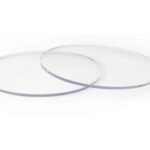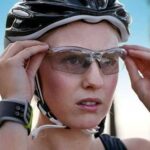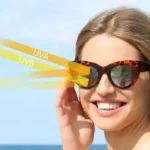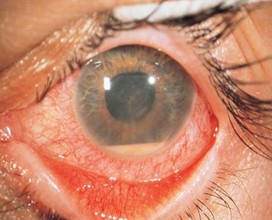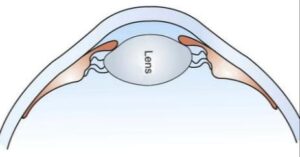Eye protection is a critical and sometimes overlooked — part of athletic safety. A single accidental finger, ball, elbow, or flying debris can
cause serious ocular injury and lifelong visual consequences. Equally important are vision- enhancing features (contrast, glare control, clarity)
that help athletes perform at their best while staying protected. This guide gives a thorough, practical, professional overview of the best protective eyewear options for athletes, the features that matter, sport- specific recommendations, prescription solutions, and care/selection tips.
A. Why protective eyewear matters
a. Prevents blunt and penetrating injuries that can lead to corneal lacerations, retinal damage, or vision loss.
b. Reduces risk of UV-related damage for outdoor athletes (cumulative phototoxicity).
c. Improves performance through glare reduction, contrast enhancement, and stable visual acuity.
d. For youth athletes, reduces risk of long- term ocular sequelae during development.
Key features to evaluate
1. Impact resistance
Lenses and frames should be made from high- impact materials (polycarbonate or Trivex are standard).
Construction should resist fracture and avoid creating sharp shards on failure.
2. Coverage and fit
Wraparound designs or sealed goggles provide peripheral protection and reduce ingress of particles.
Secure fit without pressure points: adjustable nose pads, temple length, and retention straps ar important.
3. Retention and stability
Elastic straps or sports-specific temple grips prevent slippage during dynamic movement.
Helmet compatibility (if applicable): check clearance with helmets or face cages.
4. Optical quality
Minimize distortion and maintain accurate vision across the lens.
Prescription lenses need to preserve optical quality while meeting impact standards.
5. Anti-fog and ventilation
Good ventilation (vent ports, foam seals) and anti- fog coatings/technologies are essential for indoor and high-exertion sports.
For heavy exertion or humid conditions, active ventilation and hydrophilic coatings help.
6. UV protection and glare control
Lenses should block 100% UVA/UVB for outdoor use.
Polarized or contrast-enhancing tints can improve performance in specific sports (water, cycling, snow).
7. Durability and coatings
Anti-scratch coatings, oleophobic treatments, and hydrophobic layers extend usable life and maintain clarity.
8. Compliance
Choose eyewear that meets recognized protective standards recommended for sport use.
B. Types of protective eyewear (with best- use guidance)
a. Sports goggles (polycarbonate lens, wrap
design)
Best for: basketball, racquet sports, field hockey (where allowed), racquetball, and youth sports.
Advantages: full-face/peripheral coverage, secure straps, high impact resistance, prescription inserts available.
b. Sports sunglasses (wraparound or semi-
rimless)
Best for: cycling, running, beach volleyball, outdoor training.
Advantages: UV protection, interchangeable lenses for varying light, lighter than goggles. Use polarized lenses for water or bright glare; consider non- polarized for activities where LCD reading is needed.
c. Prescription sports frames / Rx goggles Best for athletes requiring corrective lenses.
Advantages: custom correction in impact-rated materials; often available with foam seals and straps.
d. Helmet-integrated face protection
Best for: baseball/softball (batting), lacrosse, hockey — when mandated by the sport.
Advantages: designed to work with helmets for maximum combined protection. Ensure faceguard meets sport governing body rules.
e. Specialty goggles/masks
Best for: swimming (swim goggles), skiing/snowboarding (ski goggles), motorsports (ballistic-rated visors).
Advantages: sport-specific features such as hydrodynamic seals, thermal lenses, or ballistic impact resistance.
f. Face shields and full-face masks
Best for: certain contact drills, martial arts, or situations with high risk of facial trauma. Not commonly used during full competition unless
permitted.
C. Materials and lens choices
a. Polycarbonate
• The most common choice for sport protection: very high impact resistance, lightweight, naturally UV- blocking.
• Excellent for youth sport goggles and for prescription lens substrates where impact safety is paramount.
b. Trivex
• Comparable impact performance to polycarbonate, with slightly better optical clarity and lower density. Good for prescription lenses when optical quality is a priority.
c. Glass
• Superior scratch resistance and optical clarity but brittle; generally not recommended for impact sports.
d. Coatings and treatments
• Anti-fog: chemical coatings, dual-lens venting, or hydrophilic layers.
• Anti-scratch and oleophobic: extend life and ease maintenance.
• Photochromic vs interchangeable lenses: photochromic is convenient for variable light but can be slower to change than swapping lenses; choose
based on sport demands.
D. Standards and safety compliance
Look for eyewear that meets recognized protective standards appropriate to sports and region. Standards indicate testing for impact, optical clarity and resistance to peripheral hazards. Always follow sport governing body requirements (schools, leagues, NCAA, NFHS, etc.) regarding approved protective eyewear.
E. Sport-specific recommendations
a. Basketball & indoor court sports: Close- fitting goggles with polycarbonate lenses and secure straps. Anti-fog is essential.
b. Racquet sports (tennis, squash, racquetball): High-impact goggles — racquetball in particular requires sealed high-impact protection.
c. Soccer / Football: Many leagues restrict eyewear; consider low-profile, flexible protective glasses with strap if permitted. Coaches/league rules may require soft frames for youth.
d. Lacrosse & Hockey: Use sport-approved helmets with manufacturer-matched face masks or cages. Do not substitute non- approved eyewear.
e. Cycling / Road sports: Lightweight, aerodynamic sunglasses with interchangeable lenses; photochromic or interchangeable lenses for variable light conditions.
f. Skiing / Snowboarding: Insulated goggles with anti-fog, thermal lenses for contrast on snow; ensure helmet fit compatibility.
g. Water sports: Polarized, hydrophobic lenses for surface glare; competitive swimmers should use low-profile sealed swim goggles.
h. Shooting / Ballistic sports: Ballistic-rated safety glasses designed to military/ballistic standards with side protection and anti-scratch coatings.
i. Weightlifting / Gym: Not typically necessary unless in environments with overhead equipment or high risk of impact.
F. Prescription and vision correction options
1. Rx sports goggles — custom prescription lenses in impact-rated materials; ideal for athletes who cannot use contact lenses.
2. Prescription inserts — some goggles accept a lightweight prescription insert behind the protective lens.
3. Contact lenses + protective eyewear — many athletes prefer contacts for full field of view; combine with non-prescription protective goggles or sunglasses.
4. Progressive/Multifocal solutions — available in Rx sports frames when needed; discuss with an optometrist to balance optical zones and impact
safety.
G. Care, maintenance, and replacement
a. Clean with mild soap and lukewarm water; avoid solvent-based cleaners on coatings.
b. Use a microfiber cloth and store in a rigid case to prevent scratches.
c. Replace lenses or frames that are cracked, deeply scratched, or show structural fatigue.
d. Replace foam seals and straps when they degrade (sweat accelerates wear).
e. Regularly check fit and retention; athletes’ head shapes and helmet changes may require refit.
H. How to choose and buy — practical checklist
1. Identify the sport and check league rules for approved eyewear.
2. Prioritize impact-rated lenses (polycarbonate/Trivex) and certified products.
3. Try gear on with the actual helmet or headgear you’ll use; ensure no pressure points and good peripheral vision.
4. Consider anti-fog solutions for indoor/high-sweat activities; test during moderate exertion if possible.
5. For prescription needs, consult an eye-care professional to order Rx in an impact-rated substrate.
6. Budget realistically — quality protective eyewear is an investment in safety and performance.
I. Conclusion
Protective eyewear blends safety and performance. The best option depends on the sport, the athlete’s
visual needs, and compliance with league requirements. For most athletes, polycarbonate or Trivex lenses in a well-fitting, ventilated design with secure retention provide the optimal trade-off between protection, comfort, and optical performance. For athletes who require vision
correction, Rx sports goggles or contact lenses combined with protective shells are excellent solutions. Always prioritize certified, sport-appropriate eyewear and maintain it well — a small upfront investment protects both vision and athletic careers.


